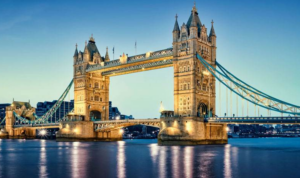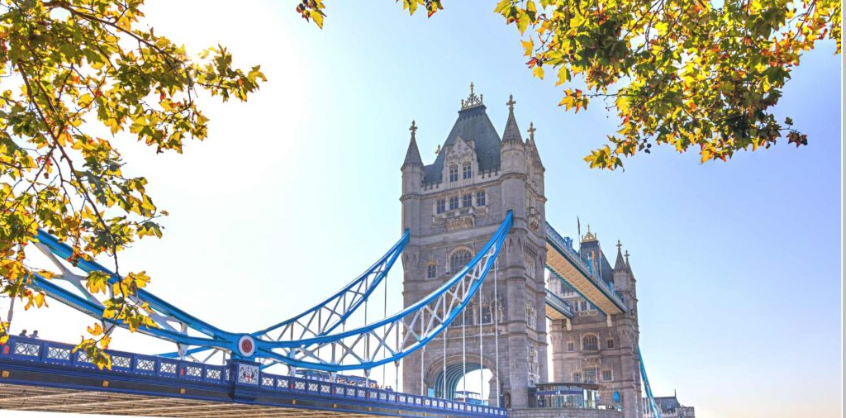London Bridge, an iconic symbol of London, has witnessed centuries of history, transformation, and innovation. Its story is a captivating tale of resilience, engineering prowess, and cultural significance. Join us on an immersive journey through time as we explore the remarkable evolution of London Bridge, from its humble beginnings to its current status as a global landmark.

The Early Beginnings
The London Bridge has its origins dating back to Roman times when the city of Londinium was established. The Romans constructed the first known bridge at this location, a wooden structure that served as a crucial link across the River Thames. This early bridge, a marvel of its time, not only facilitated trade and travel but also played a significant role in the development of the city.
The Medieval Marvel
As London grew in importance during the Middle Ages, so did the need for a more substantial and permanent bridge. In the 13th century, a stone bridge was erected to replace the earlier wooden one. This medieval marvel was a testament to the craftsmanship of the time, featuring multiple arches, defensive gatehouses, and even buildings atop its piers. These structures housed shops and houses, creating a bustling marketplace on the bridge itself.
The Great Fire and Reconstruction
The Great Fire of London in 1666 left extensive damage in its wake, including significant destruction to London Bridge. However, this disaster provided an opportunity for renewal. The bridge was rebuilt, this time without the buildings on top, resulting in a more functional and modern structure. The reconstructed bridge featured 19 arches, each designed to accommodate the flow of the river.
A Modern Engineering Feat
The 19th century marked a turning point in the history of London Bridge, with the construction of a new bridge designed by engineer John Rennie. This elegant stone bridge, featuring five graceful arches, represented a remarkable leap in engineering and design. It stood as a testament to Victorian-era innovation, and its grandeur contributed to London’s reputation as a global metropolis.
The Move to Arizona
In the 1960s, a particularly intriguing chapter unfolded in the history of London Bridge when authorities decided to dismantle and transport it to Lake Havasu City, Arizona, transforming it into a tourist attraction. This audacious move not only surprised many but was also motivated by the necessity for infrastructure upgrades in London. It simultaneously offered a chance to conserve a piece of history while establishing a new landmark in the American Southwest.
The Modern Landmark
Today, London Bridge stands as a modern marvel, still connecting the heart of London across the River Thames. It has become an enduring symbol of the city, featured in countless films, books, and artworks. The current bridge, which opened in 1973, is a functional and efficient structure that pays homage to its storied past. While it may lack the architectural opulence of its predecessors, it continues to serve its essential purpose as a vital transportation link.
Cultural Significance
Beyond its practical role as a river crossing, London Bridge holds immense cultural significance. It has inspired poems, songs, and even nursery rhymes, with the popular “London Bridge Is Falling Down” echoing through generations. The bridge’s enduring presence in the cultural landscape of London is a testament to its status as an iconic landmark and a source of inspiration for artists and storytellers alike.
London Bridge Today
Today, London Bridge is not just a bridge; it’s a vibrant hub of activity. It connects the historic boroughs of Southwark and the City of London, offering stunning views of the city’s skyline. Visitors can explore nearby attractions like Borough Market, a bustling food and artisan market, and The Shard, Western Europe’s tallest skyscraper, making it a dynamic part of London’s urban tapestry. Additionally, the presence of modern amenities, such as pedestrian walkways and well-maintained roadways, ensures that the bridge continues to serve as a vital transportation artery.
Conclusion
In conclusion, the evolution of London Bridge is a story of adaptability and endurance. From its Roman origins to its modern incarnation, it has weathered fires, wars, and the test of time. This iconic structure continues to bridge the past and the present, reminding us of the rich history and heritage that flows through the heart of London.
As you explore London’s vibrant streets and gaze upon this enduring landmark, take a moment to appreciate the historical journey that London Bridge has undertaken, binding generations together along the way. It stands as a testament to human ingenuity, a symbol of London’s resilience, and a bridge that unites the city’s past, present, and future.
You might also be interested in:
- London’s Most Popular Family Attractions: 8 Things Kids Will Love
- INVESTMENT AND REAL ESTATE
- Reasons Why London Is the Ideal City for Business
- 10 Reasons Why You Should Invest Property in London

